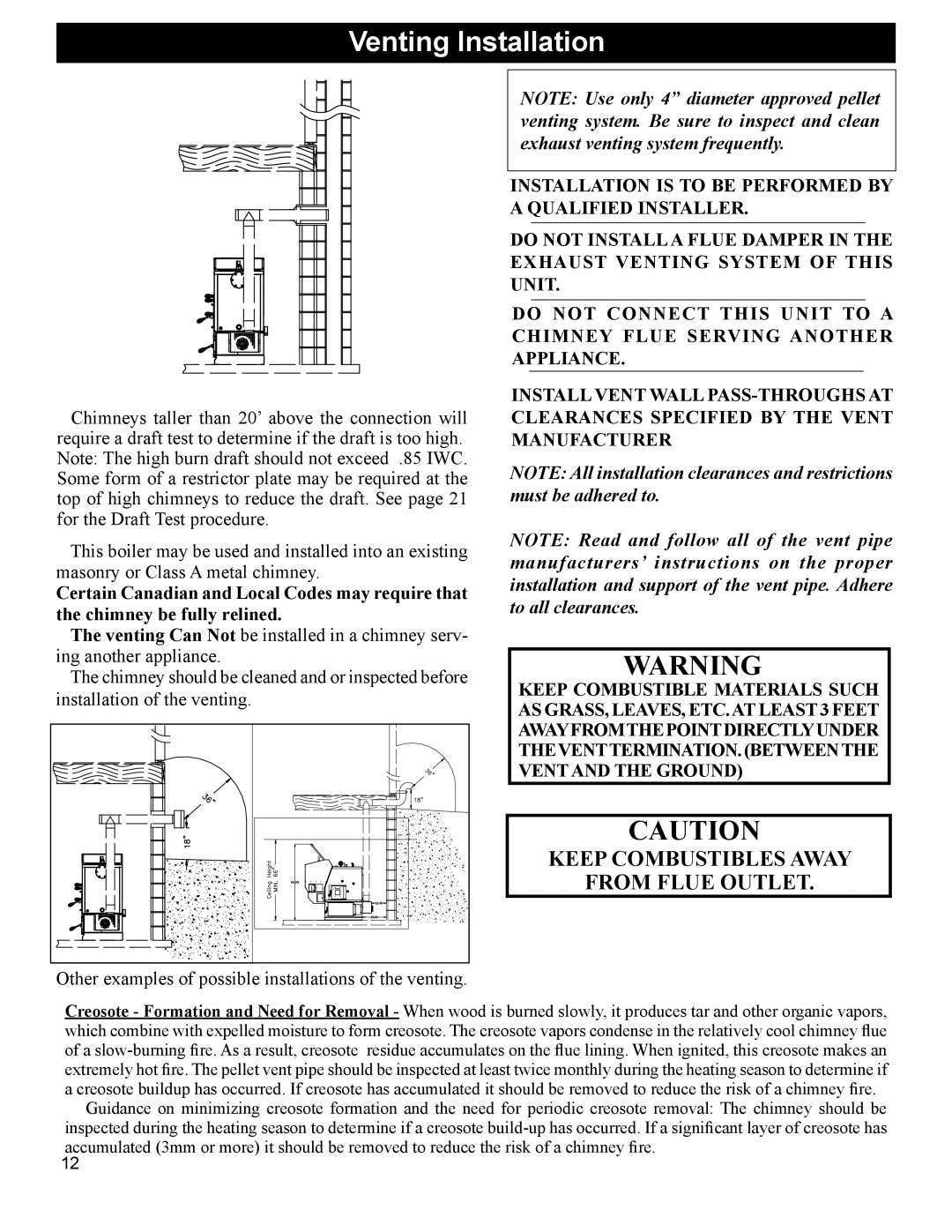
Venting Installation
Chimneys taller than 20’ above the connection will require a draft test to determine if the draft is too high. Note: The high burn draft should not exceed .85 IWC. Some form of a restrictor plate may be required at the top of high chimneys to reduce the draft. See page 21 for the Draft Test procedure.
This boiler may be used and installed into an existing masonry or Class A metal chimney.
Certain Canadian and Local Codes may require that the chimney be fully relined.
The venting Can Not be installed in a chimney serv- ing another appliance.
The chimney should be cleaned and or inspected before installation of the venting.
Other examples of possible installations of the venting.
NOTE: Use only 4” diameter approved pellet venting system. Be sure to inspect and clean exhaust venting system frequently.
INSTALLATION IS TO BE PERFORMED BY A QUALIFIED INSTALLER.
DO NOT INSTALL A FLUE DAMPER IN THE EXHAUST VENTING SYSTEM OF THIS UNIT.
DO NOT CONNECT THIS UNIT TO A CHIMNEY FLUE SERVING ANOTHER APPLIANCE.
INSTALL VENT WALL
NOTE: All installation clearances and restrictions must be adhered to.
NOTE: Read and follow all of the vent pipe manufacturers’ instructions on the proper installation and support of the vent pipe. Adhere to all clearances.
WARNING
Keep combustible materials such as grass, leaves, etc.at least 3 feet awayfromthepointdirectlyunder theventtermination.(betweenthe vent and the ground)
CAUTION
Keep combustibles away
from flue outlet.
Creosote - Formation and Need for Removal - When wood is burned slowly, it produces tar and other organic vapors, which combine with expelled moisture to form creosote. The creosote vapors condense in the relatively cool chimney flue of a
Guidance on minimizing creosote formation and the need for periodic creosote removal: The chimney should be inspected during the heating season to determine if a creosote
12
